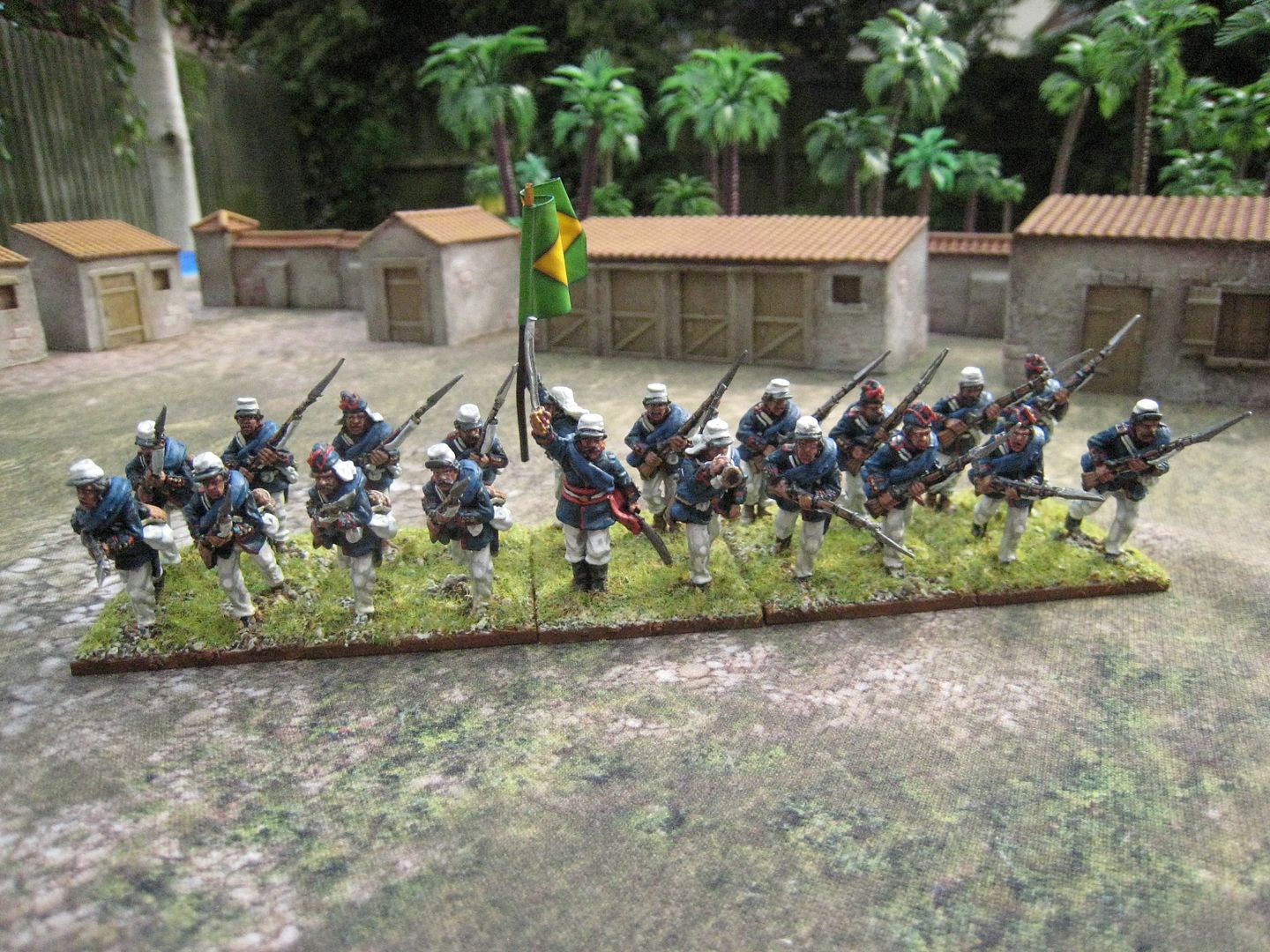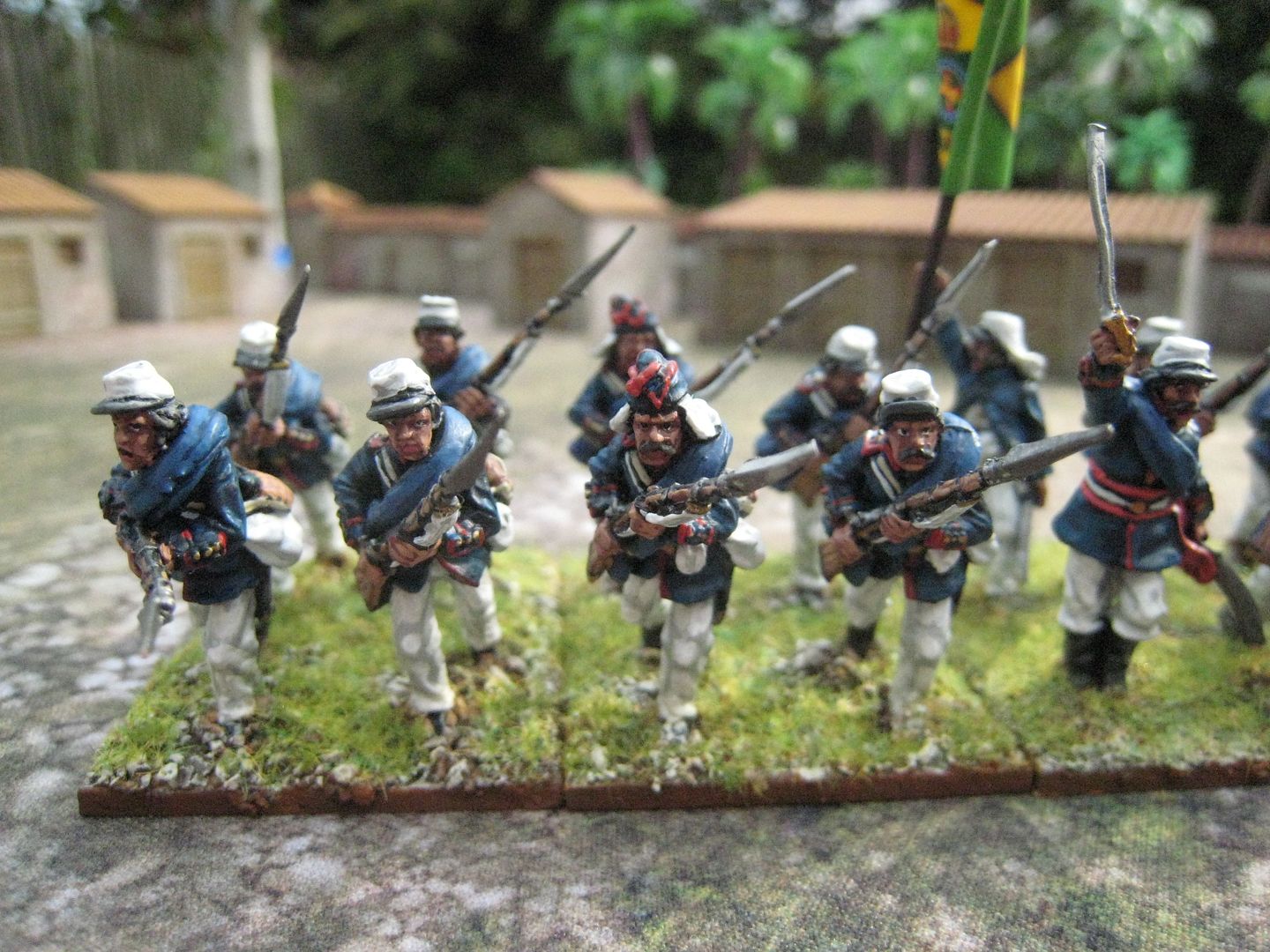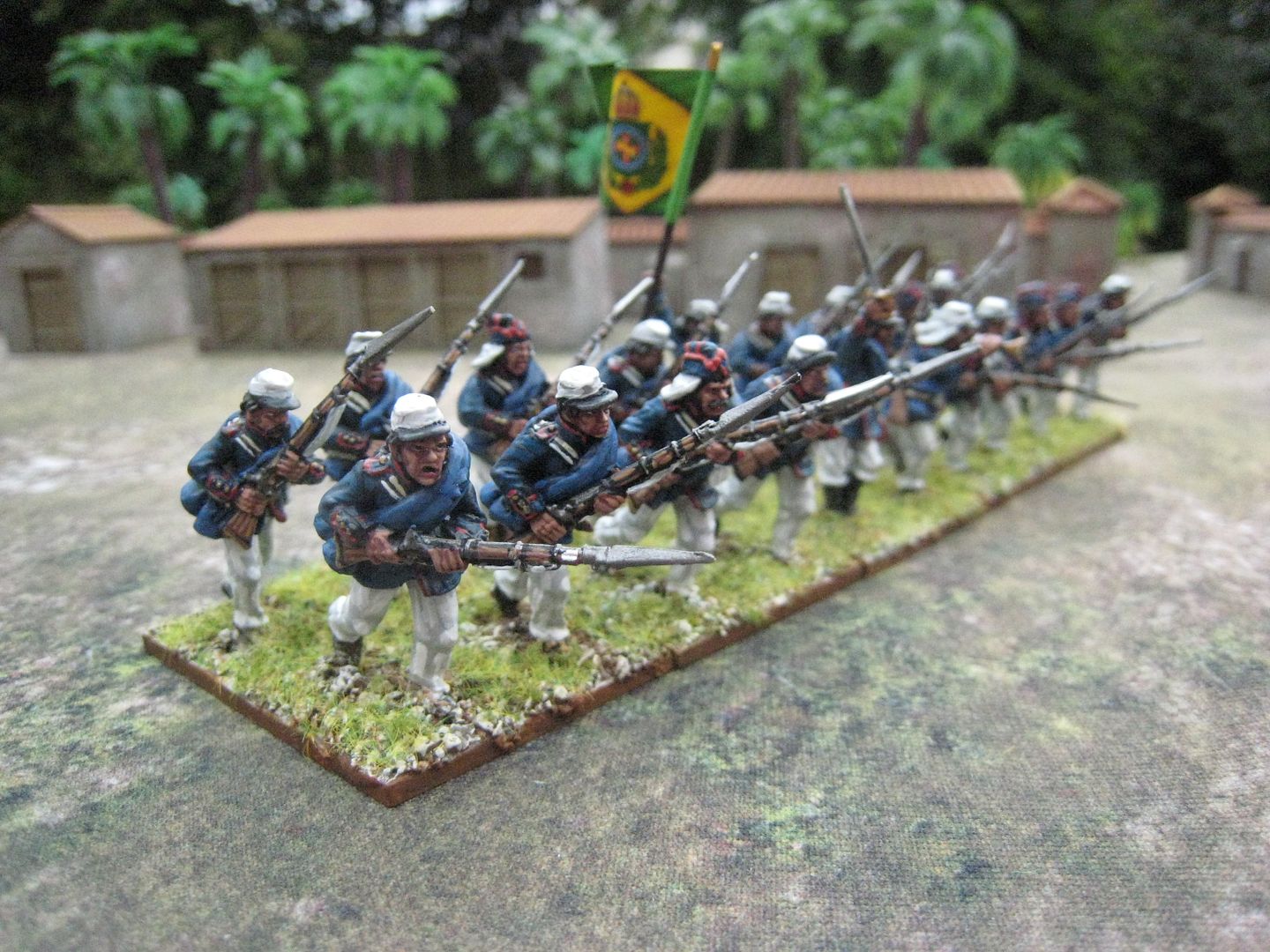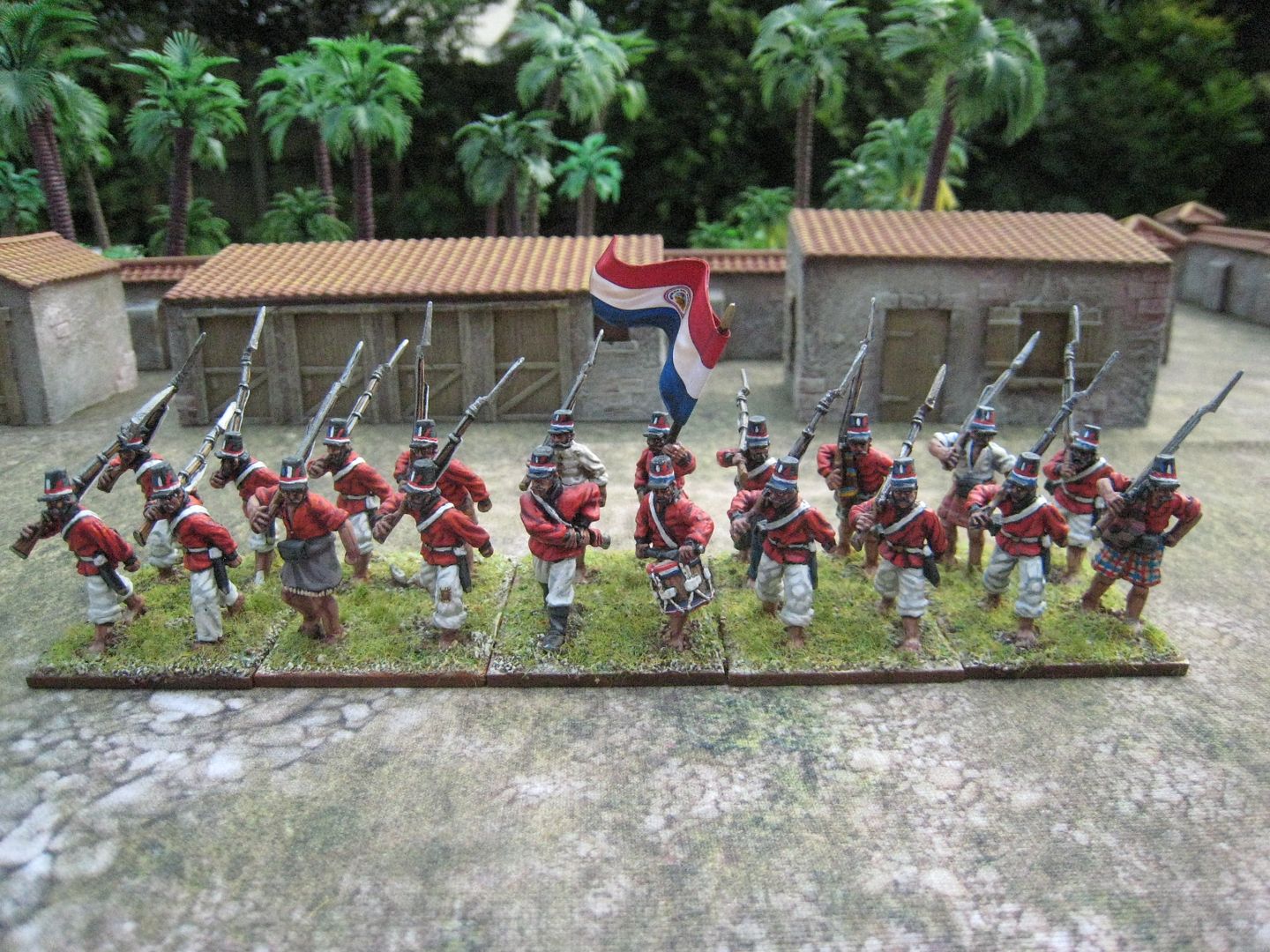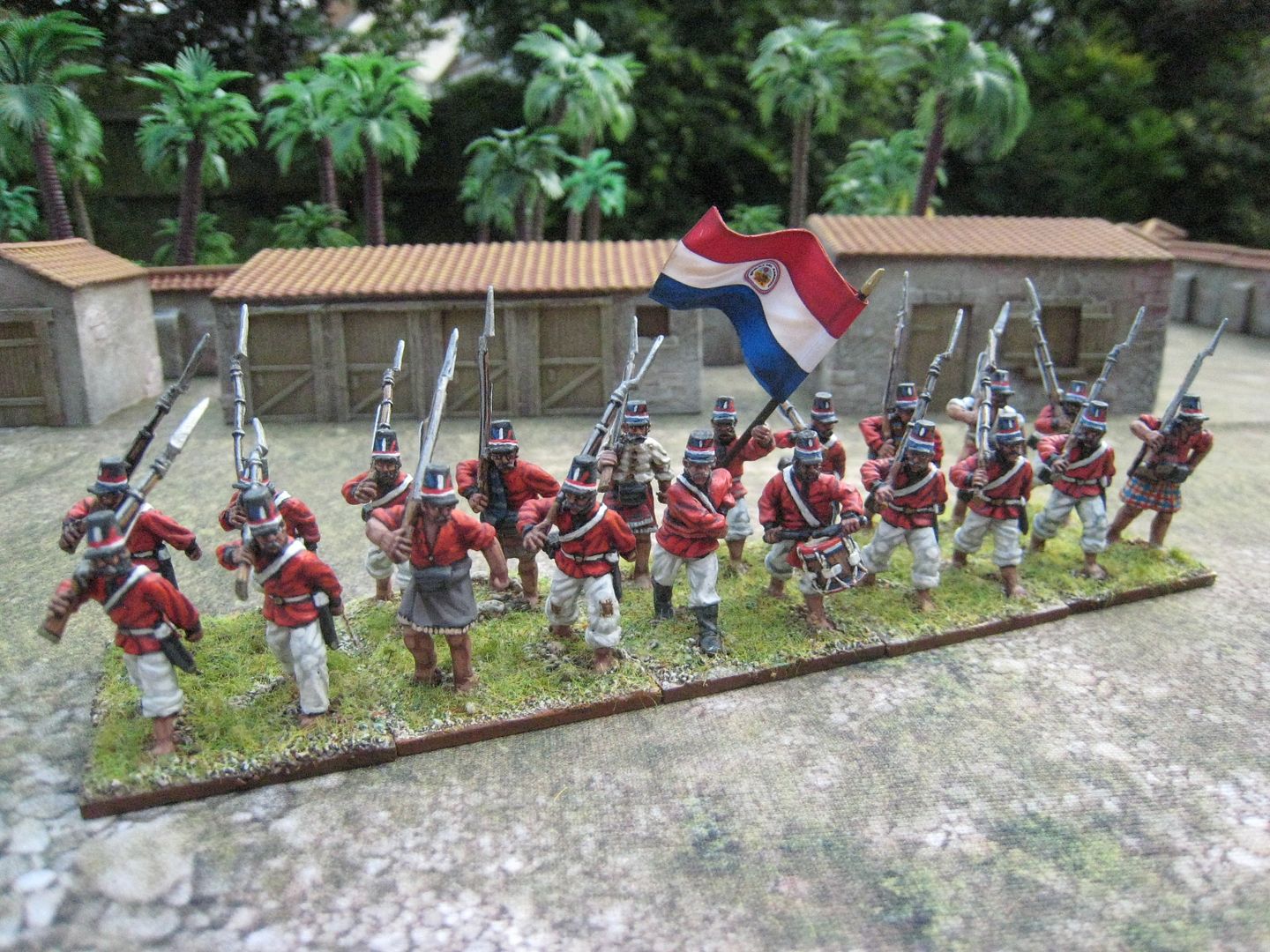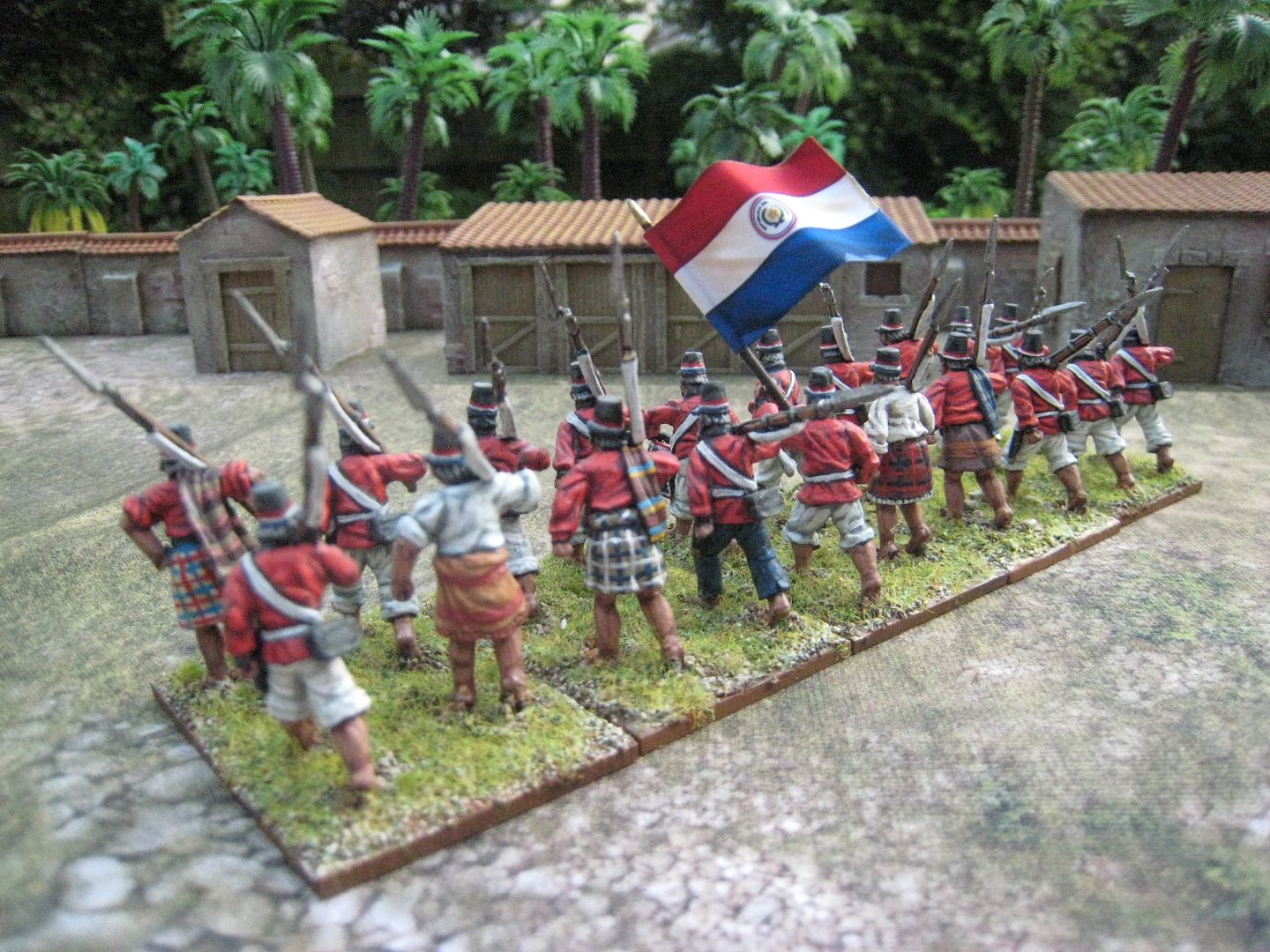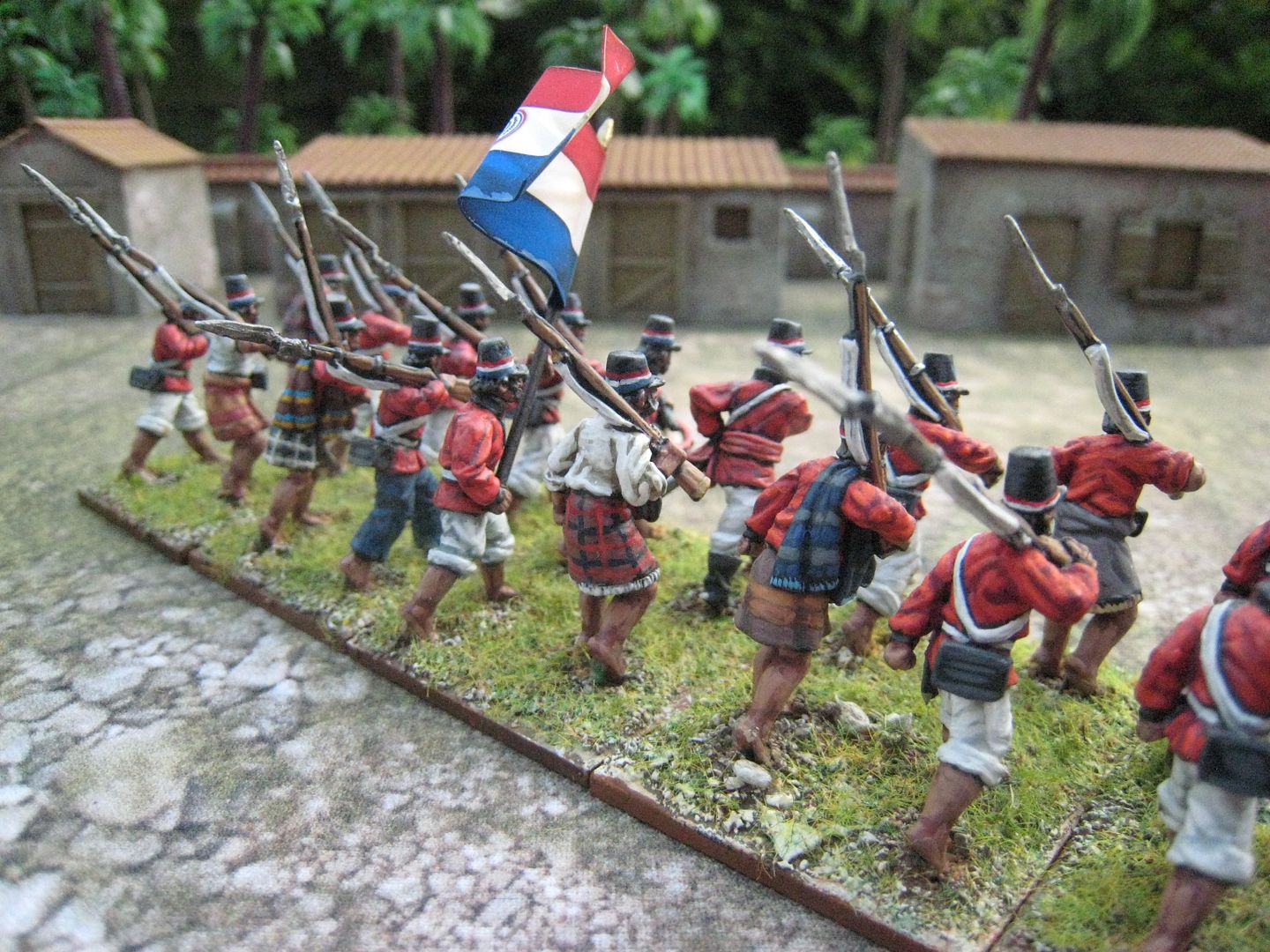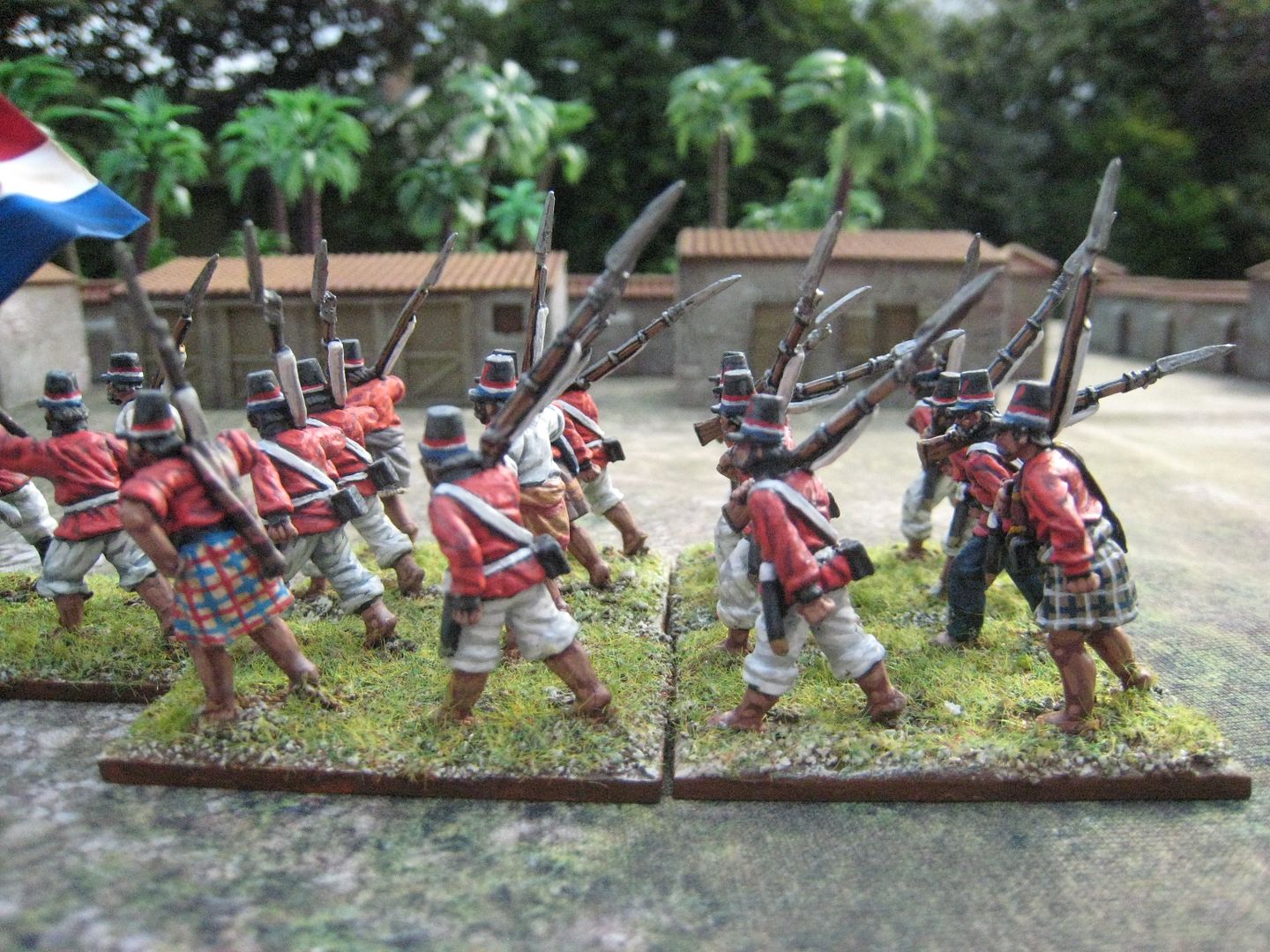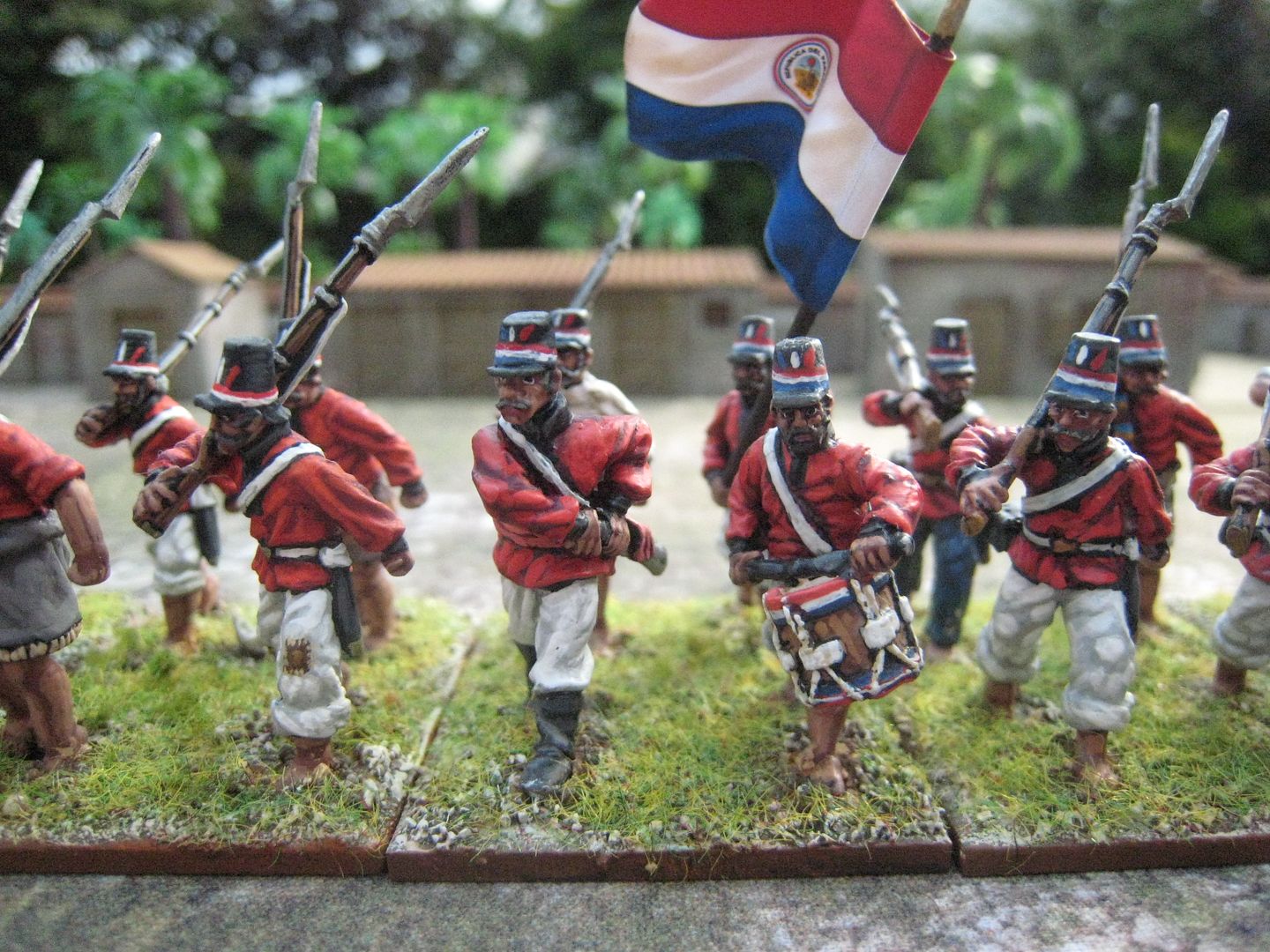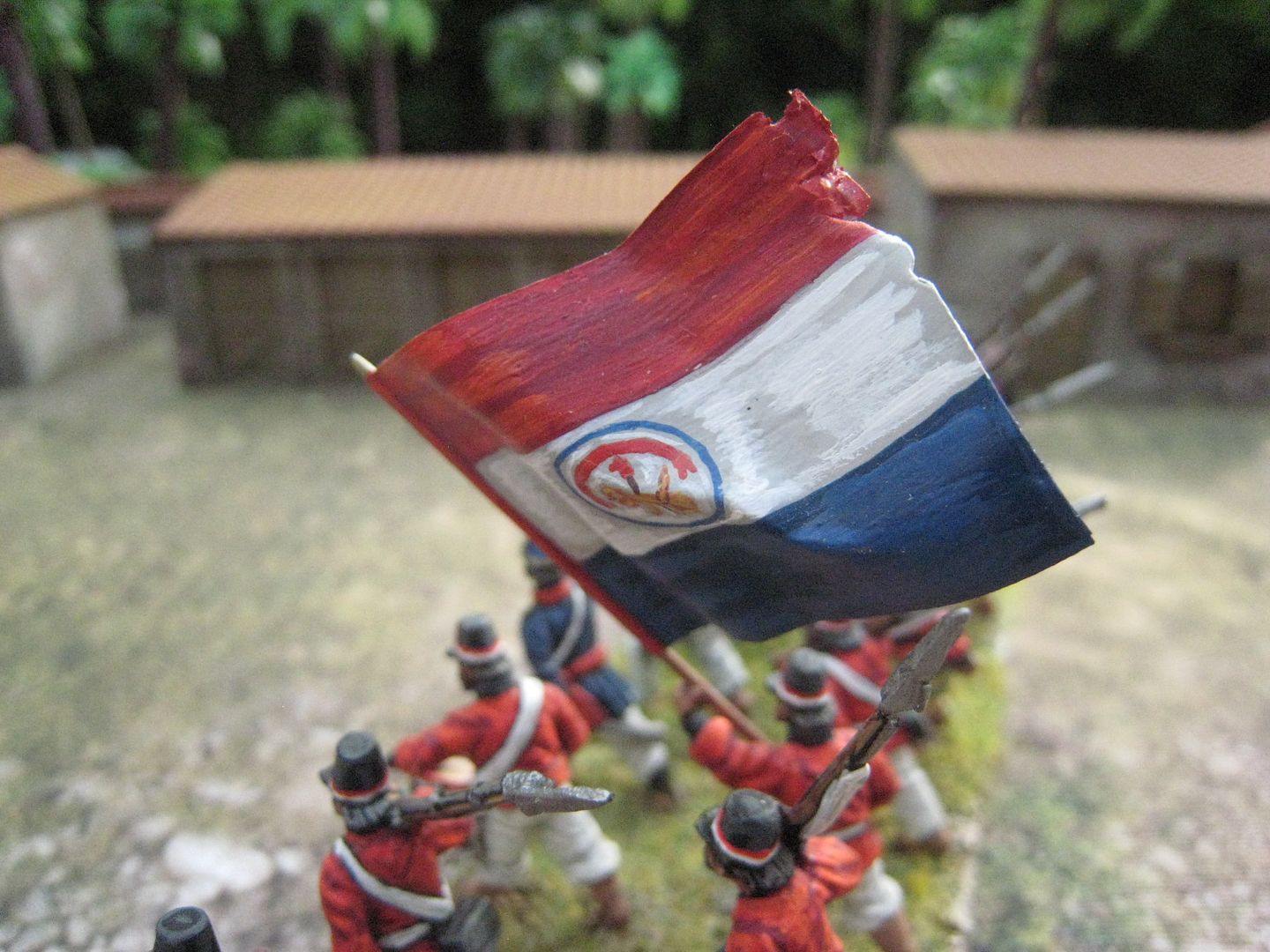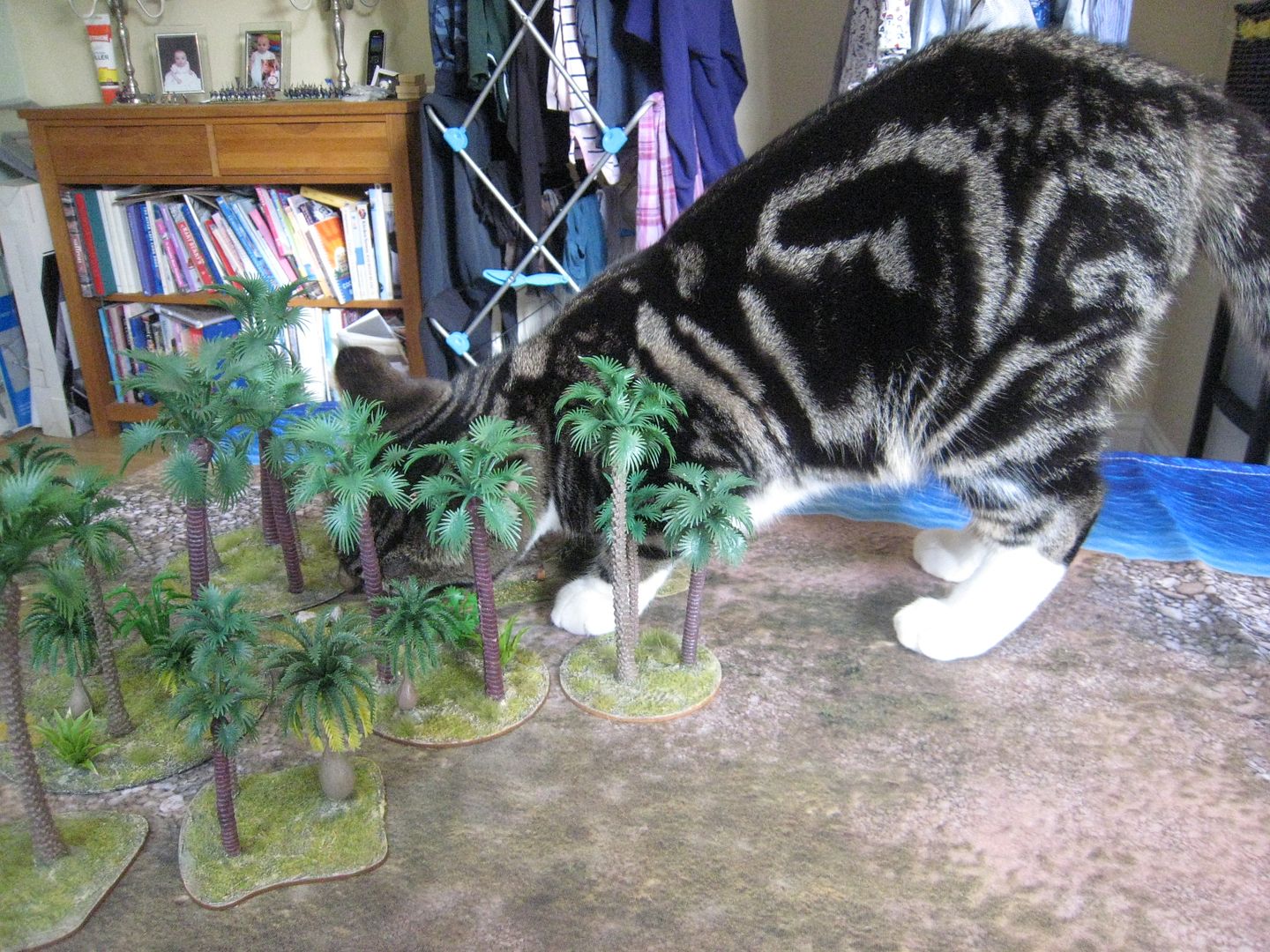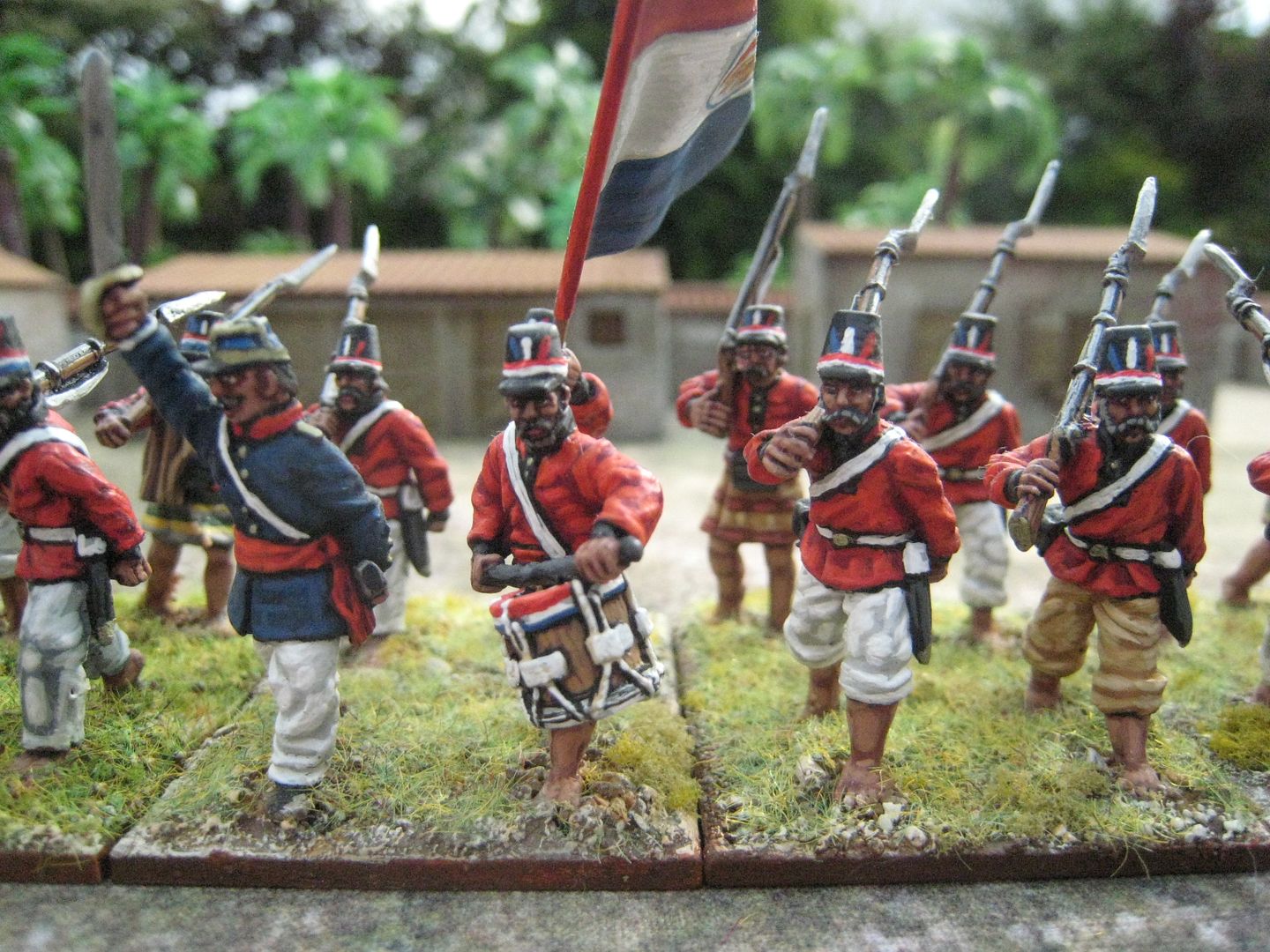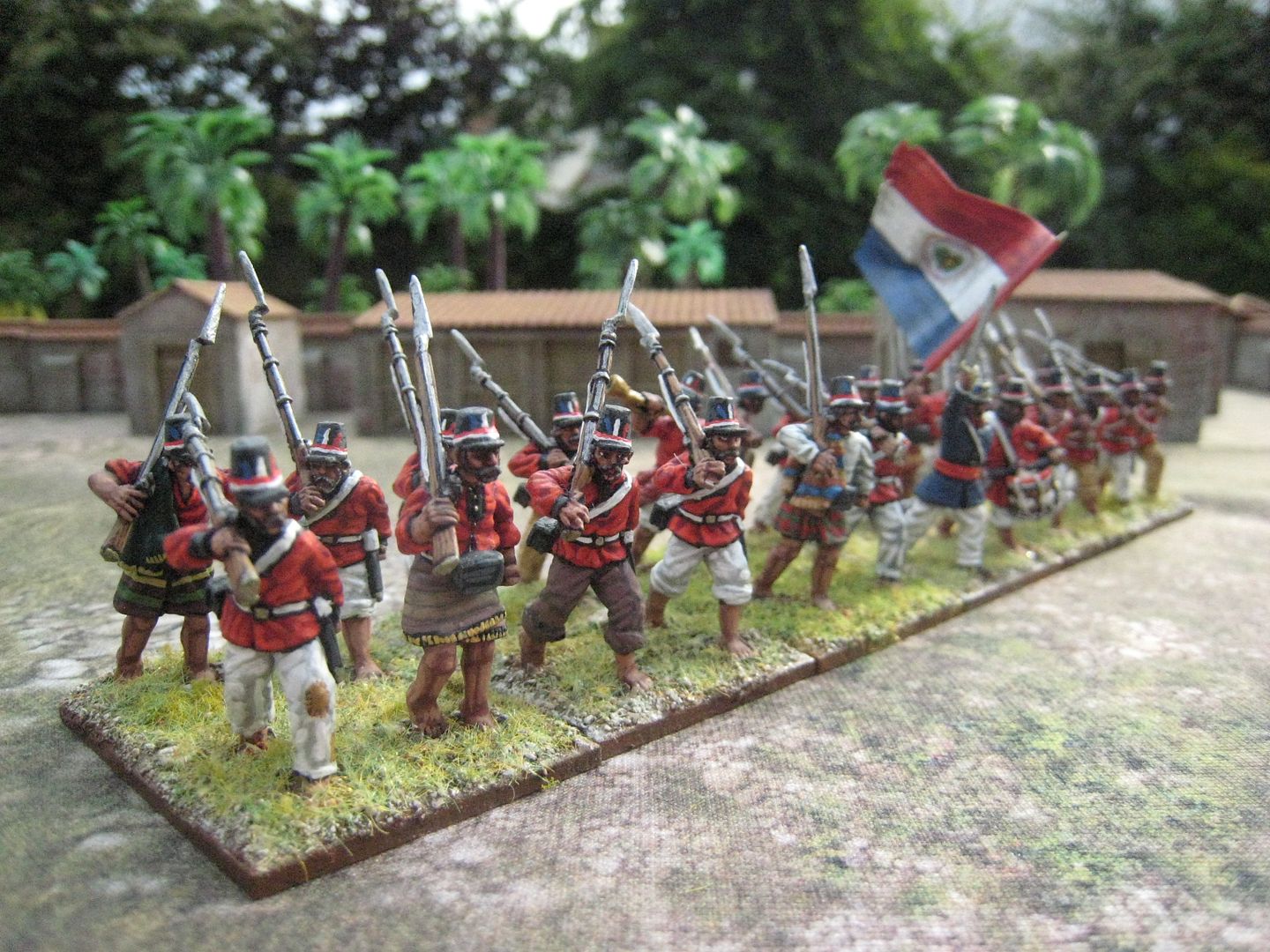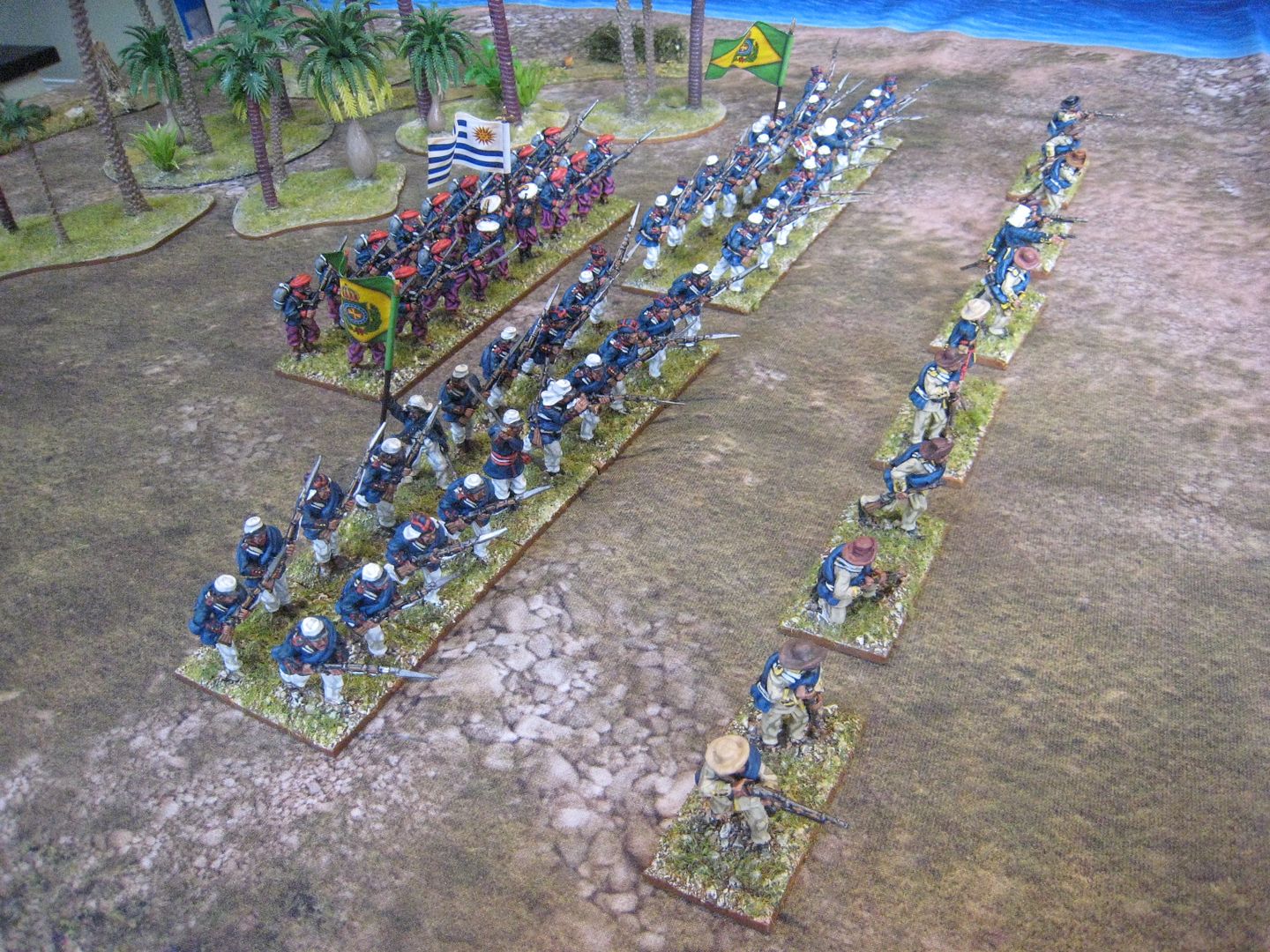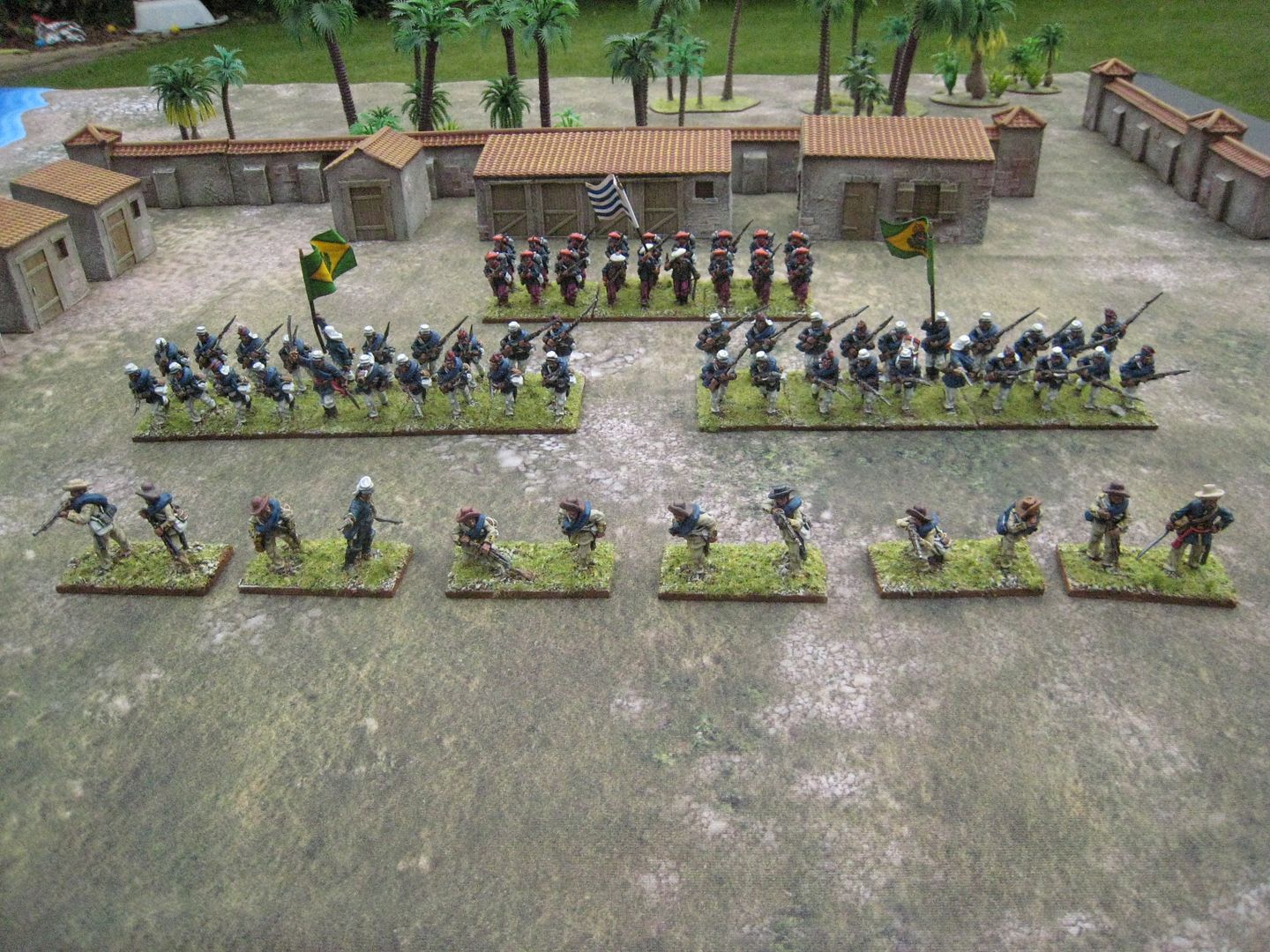This is the first battalion from Brazil, which supplied the largest contingent of troops for the War of the Triple Alliance. As with my Paraguayans, I'm simply assigning numbers to these units in consecutive order. Brazilian line infantry battalions did have regimental distinctions up to February 1866, when the decision was taken to modify and simplify uniforms in light of the expansion of Brazil's army as a result of the war. That expansion saw the regular infantry increased to twenty-two battalions, of which the first seven were fusiliers and the remainder "cacadores". In addition to these units, Brazil could field a large number of national guard and local provincial troops. The "paper" strength of each fusilier battalion was 882 men in eight companies; so I've modelled them as being 20 figures, which give a scale of about 1:40 (allowing for some battle casualties). That said, the Allied order of battle for 1865/66, as provided by Hooker in his Foundry book on the war, gives strengths between 370 and 500 for the Brazilian regular battalions, which brings us closer to 1:20. I'm still in two minds over unit strengths - I've already decided to drop the Argentinians down to 16 figures; I might do the same with the Uruguayans.
These are Perry Miniatures figures. Their website shows the various options for painting these figures. I've gone for the dark blue service dress tunic with white, summer trousers. The barrack caps probably should have white middles to them. I used the Foundry "Union Blue 111" palette for the tunic and the "Deep Blue 20" palette for the blanket rolls (to add a bit of variety between the blues). For the flesh of all the troops in this war, I use "South American Flesh 119" palette. The "Union Blue" palette has become my default dark blue, which I've also been using for Argentinian infantry and, naturally, ACW Union troops.
20 figures. Painted November 2020. Flag from Flags of War.
